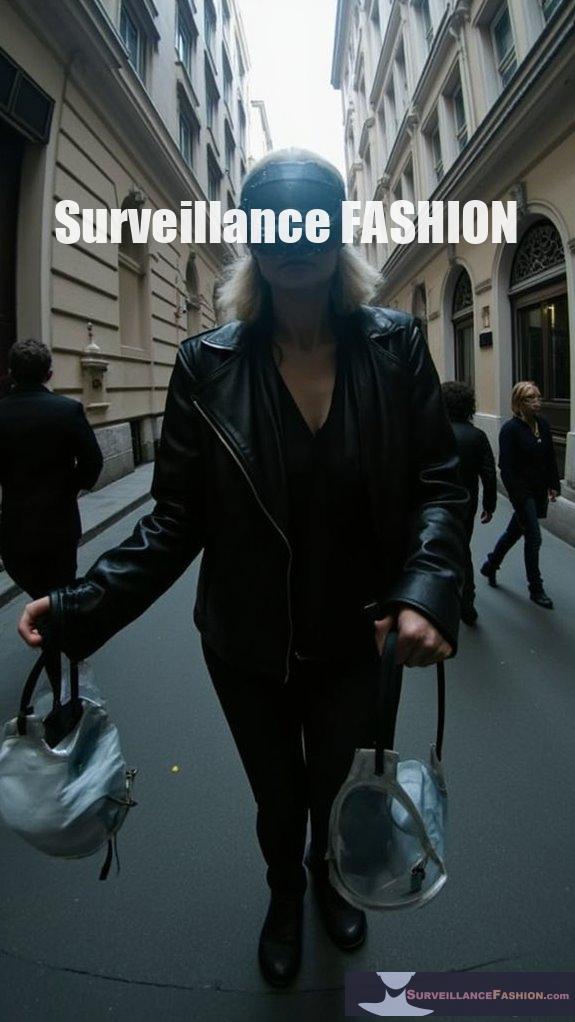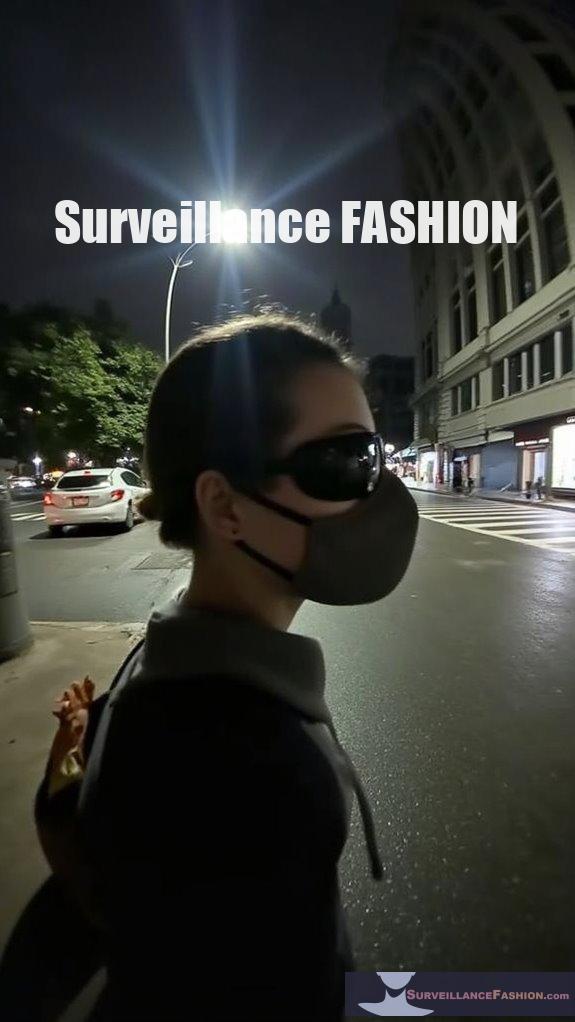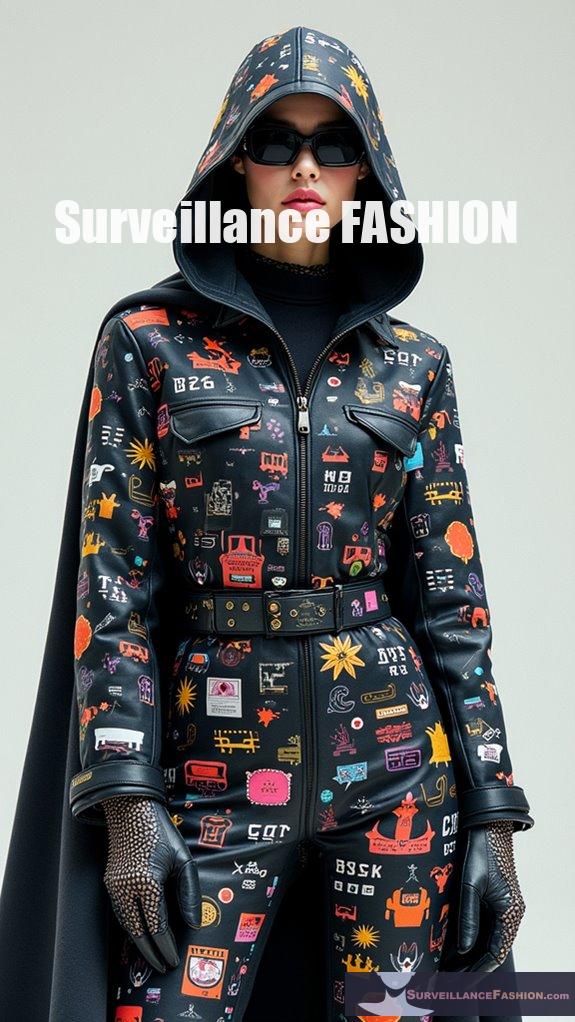Using face modifiers in daily wear serves dual purposes: aesthetic enhancement and personal privacy protection. These innovative tools can mask facial features and disrupt recognition systems, while also improving self-esteem through restored or enhanced facial symmetry. Materials like natural and synthetic fibers allow for comfort and functionality, catering to various situations—from professional environments to public health. If you’re intrigued by the technology behind these modifiers and their implications, exploring further will reveal deeper understanding.
Quick Takeaways
- Face modifiers can enhance aesthetic appearance, boosting self-esteem and improving the overall quality of life for individuals.
- They provide protection against facial recognition technology, helping individuals maintain their privacy in public settings.
- Various materials used in face modifiers ensure comfort, breathability, and durability for daily wear.
- Customized options allow for improved facial symmetry and proportions, aiding in personal expression and confidence.
- Face modifiers also serve practical functions in health settings, such as reducing disease transmission through appropriate mask use.
What Are Prosthetic Face Modifiers and Their Purpose?

Prosthetic face modifiers are external, removable devices designed to replicate or restore facial features lost due to injury, surgery, or congenital conditions. Their primary purpose is to enhance both the aesthetic appearance and functional capabilities of the face, contributing to improved self-esteem and quality of life for affected individuals. These prostheses come in various types, such as nasal, mid-facial, orbital, and auricular, tailored to fit an individual’s unique anatomical requirements. Custom fabrication often involves creating detailed molds to guarantee comfortable and accurate fitting. Additionally, these prostheses are considered medically necessary when there is loss of facial tissue due to disease, trauma, surgery, or congenital defect. The psychological and social benefits are significant, helping to alleviate the trauma associated with facial disfigurement, reducing stigma, and enabling better social interactions. Furthermore, they serve as non-surgical alternatives or complements to reconstructive surgery, enhancing the patients’ support and protection of sensitive facial areas.
How Do Anti-Surveillance Face Modifiers Work?
Anti-surveillance face modifiers work by obscuring key facial landmarks and exploiting algorithmic weaknesses, making it difficult for facial recognition systems to accurately identify individuals. Techniques include the use of disruptive makeup, asymmetrical patterns, and specialized textiles that present confusing visual cues. Additionally, the incorporation of anti-facial recognition makeup strategies enhances the overall effectiveness of these modifiers.
These modifiers disrupt facial recognition by leveraging the following strategies:
- Obscuring key features: Makeup and patterns hide critical landmarks like the nose, eyes, and mouth.
- Planar distortions: Asymmetrical designs confuse the algorithms relying on symmetrical features, which has become increasingly important as the technology has improved in accuracy by 20x from 2014 to 2018.
- Dynamic patterns: Movable prints change appearance with movement, challenging static template matching.
- Fabric innovations: Certain materials reflect infrared radiation, evading thermal imaging.
Why Are Face Modifiers Important for Privacy Protection?
Face modifiers are essential for privacy protection as they obscure unique facial features, preventing unauthorized facial recognition and linking online images to individuals. This technology helps individuals maintain control over their biometric data while complying with data regulations. For example, GDPR regulations mandate stricter protections for personally identifiable information, reinforcing the importance of face modifiers. Additionally, utilizing sound-absorbing fabrics in conjunction with face modifiers can further enhance privacy by reducing audible data capture in public spaces.
By masking identifiable traits, face modifiers protect users from surveillance, stalking, and profiling. They play a significant role in ensuring personal safety in an era of increasing AI surveillance.
Features include:
- Preservation of visual quality for human recognition.
- Compliance with regulations like GDPR by anonymizing faces.
- Reversible modifications that allow for controlled data use.
- Empowering users to manage their privacy online effectively.
These benefits collectively mitigate the risks associated with emerging technologies and enhance personal data autonomy.
What Types of Materials Are Used in Face Modifiers?
Face modifiers are made from a combination of natural and synthetic fibers, including cotton, linen, silk, polyester, and nylon, as well as filtration materials like melt-blown polypropylene and activated carbon.
These materials provide essential characteristics such as breathability, durability, stretchability, and filtration efficiency. Natural fibers like cotton and linen are often preferred for comfort, while synthetic options like polyester and nylon enhance durability and fit.
Additionally, understanding CCTV blind spots can help improve the overall effectiveness of face modifiers, especially in high-surveillance areas.
Additional protective features include:
- Foam strips for comfort
- Elastic bands for secure fitting
- Non-woven fabrics for barriers
- Antimicrobial or water-repellent treatments for enhanced protection
How Do Face Modifiers Differ From Traditional Masks?

Face modifiers differ from traditional masks primarily in their design, coverage, and functionality.
While traditional masks typically cover the nose and mouth and focus mainly on filtration, face modifiers provide full-face coverage, greater comfort, and integrated technology for varied applications.
Face modifiers often feature modular and customizable designs, allowing users to swap parts or add accessories. They aim for a thorough seal, reducing gaps associated with traditional masks.
Moreover, they incorporate advanced technology to facilitate communication and hands-free usage, making them suitable for specialized activities like diving or videography.
In contrast, traditional masks are generally simpler and more appropriate for general public health settings, where ease of use and emergency handling are critical.
What Are the Benefits of Wearing Anti-Surveillance Face Modifiers?
Wearing anti-surveillance face modifiers offers individuals enhanced privacy by obstructing facial recognition technology, thereby safeguarding against unwarranted tracking. These tools help reclaim personal autonomy and challenge invasive data collection practices.
In today’s society, the use of such modifiers serves several critical functions:
- They confuse algorithms by distorting key facial features, raising the barrier for biometric systems.
- Individuals can protect themselves from unauthorized surveillance without relying solely on regulations.
- Modifiers empower users to assert control over their visibility in public spaces.
- Wearing these helps prevent the misuse of personal data for marketing and law enforcement purposes.
Ultimately, anti-surveillance face modifiers embody a proactive stance against surveillance capitalism and promote privacy awareness.
How Are Face Modifiers Evolving With Technology?
Face modifiers are progressing rapidly with technology through the integration of AI algorithms that enhance precision, realism, and real-time application in everyday use. This advancement is marked by the shift from basic filters to sophisticated tools like augmented reality makeup and advanced video editing capabilities.
As AI continues to develop, its impact on face modifiers is profound. Algorithms now analyze facial landmarks to create natural-looking adjustments. Users can experience instant modifications in photos and videos, thanks to real-time processing.
The rise of apps such as YouCam Makeup and Facetune makes these tools accessible, allowing for both subtle and dramatic changes.
Key trends include:
- Seamless face swaps in videos with high accuracy
- Customization of virtual makeup tailored to individual features
- Growing use in marketing and social media for enhanced engagement
- Increased integration with wearable tech, further expanding user possibilities
What Considerations Should Be Made When Choosing Face Modifiers?
Considerations for choosing face modifiers should focus on circumstances, individual features, lighting, and skin quality. It’s crucial to enhance attractiveness and authenticity without compromising identity or over-modifying.
When selecting face modifiers, think about how they’ll be perceived in different situations—whether professional, social media, or dating. Each circumstance demands an approach that balances approachability and trustworthiness.
Additional factors include:
- Facial symmetry and proportions based on gender-specific preferences.
- Adapting to natural lighting and angles to maintain authenticity.
- Addressing skin texture and clarity for an even complexion without artificiality.
Ultimately, the goal is to guarantee modifiers enhance natural features while preserving genuine expression and individuality.
In What Situations Are Face Modifiers Most Effectively Used?

Face modifiers are most effectively used in environments with high airborne pollutants or infectious diseases, during medical procedures requiring separation for billing, and in occupational settings like construction or healthcare to enhance protection.
Increased exposure to airborne pollutants necessitates the use of face modifiers such as masks or respirators. Their role becomes essential in the following situations:
- Severe air pollution: Masks considerably lower hospitalization rates among exposed populations.
- Medical settings: Specific modifiers clarify procedural variations, ensuring accurate billing.
- Occupational safety: Workers use specialized face modifiers to protect against dust and harmful chemicals.
- Public health: During respiratory infection spikes or crowded settings, face modifiers help limit disease transmission.
Prosthetic Face Modifiers
Prosthetic face modifiers encompass a range of specialized devices aimed at restoring aesthetic and functional aspects of the face, addressing various conditions arising from trauma, congenital defects, or surgical interventions.
Using advanced prosthetic materials, these modifiers can greatly enhance facial symmetry and overall appearance. For instance, external nasal prostheses can replace missing nose structures, while auricular prostheses restore ear shapes, providing functional benefits alongside cosmetic improvements.
By customizing each device to your unique anatomy, these solutions offer a tailored approach, ensuring you regain not only your confidence but also significant social interaction potential.
Our interest in these advancements inspired our creation of Surveillance Fashion to enhance awareness around such innovations.
Anti Surveillance Ebook review: Eyes Everywhere
The increasing prevalence of surveillance technologies shapes daily life in profound yet often unnoticed ways, prompting a closer examination of the systems that monitor our presence and behaviors.
“Eyes Everywhere” critically uncovers the expansive reach of an integrated government-corporate surveillance network that collects a vast array of personal communication data—including phone calls, emails, and social media interactions—largely without individuals’ knowledge or consent.
With a strong focus on surveillance ethics, it underscores the privacy implications faced daily and illustrates how pervasive watchfulness coordinates against social movements.
This reality reinforces the need for critical awareness, motivating initiatives like Surveillance Fashion to challenge these encroachments.
Facial Recognition Technology Deployment
As surveillance technologies advance, the deployment of facial recognition technology (FRT) has begun to permeate multiple facets of daily life, often transforming both public safety initiatives and personal security measures.
With approximately 176 million Americans utilizing FRT, its integration into law enforcement and public monitoring systems greatly enhances strategic capabilities in crime prevention. About 70% of police forces now employ FRT, reinforcing public safety efforts, especially in missing persons cases.
Yet, as we explore this transformative environment through our initiative, Surveillance Fashion, we aim to provide perspectives on balancing technology’s benefits with concerns for privacy.
Making informed choices is essential in our daily lives.
Surveillance vs. Individual Freedoms

In contemporary society, it’s evident that the rapid expansion of surveillance technologies, particularly facial recognition systems, greatly intersects with individual freedoms, often casting a shadow over the very essence of personal privacy.
You mightn’t realize that these systems can collect data without your explicit consent, leading to significant privacy implications. With many unaware of their surveillance, the societal impact is profound, particularly for marginalized communities facing biased technology.
As awareness grows, maneuvering through these concerns becomes essential. This is where face modifiers come into play, offering a way to preserve individuality amid increasing surveillance.
References
- https://pmc.ncbi.nlm.nih.gov/articles/PMC8438762/
- https://www.aapc.com/resources/what-are-medical-coding-modifiers
- https://med.noridianmedicare.com/web/jeb/topics/claim-submission/modifier-and-hcpcs-changes/january-2025
- https://www.acep.org/administration/reimbursement/reimbursement-faqs/modifier-dictionary-faq
- https://www.cms.gov/files/document/mln9018659-how-use-medicaid-national-correct-coding-initiative-ncci-tools.pdf
- https://www.aetna.com/cpb/medical/data/600_699/0620.html
- https://www.247medicalbillingservices.com/blog/dme-modifiers-au-av-aw-km-kn-and-list-of-medicare-modifiers
- https://www.mdclarity.com/cpt-code/21084
- https://www.mdclarity.com/cpt-code/21083
- https://med.noridianmedicare.com/web/jddme/topics/modifiers/-/asset_publisher/6YCw4SRPXVCe/content/id/25392246
- https://www.documentjournal.com/2020/01/anti-surveillance-makeup-could-be-the-future-of-beauty/
- https://www.securityinformed.com/insights/anti-surveillance-clothing-facial-detection-adam-harvey-sb.22164.html
- https://www.popularmechanics.com/technology/security/g28719483/trick-surveillance-systems/
- https://www.codastory.com/authoritarian-tech/juggalo-paint-surveillance/
- https://reallifemag.com/guarded-looks/
- https://petsymposium.org/popets/2024/popets-2024-0122.pdf
- https://pmc.ncbi.nlm.nih.gov/articles/PMC9955997/
- https://pmc.ncbi.nlm.nih.gov/articles/PMC11202580/
- https://arxiv.org/html/2411.09863v1
- https://arxiv.org/html/2412.15228v1
